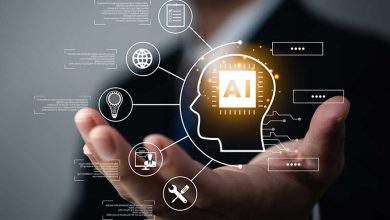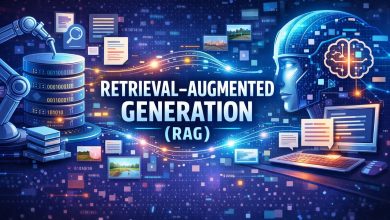
The business world is experiencing AI implementation fatigue. Organizations, their teams, and stakeholders are tired of hearing promises about how AI will transform everything. Many workforces struggle to embrace these technologies, with businesses rushing to adopt solutions that don’t address their actual needs, while 32% of working adults worry about job security. Meanwhile, tangible return on investment for most AI initiatives remains elusive.
At Lobster, we believe that properly implemented agentic AI represents a significant advancement that can transform the potential of generative AI into practical, immediately applicable tools. As a data integration company, we understand that high-quality, semantically consistent data forms the foundation of any successful AI implementation. We see agentic systems as the bridge between experimental technology and production-ready business applications.
Understanding agentic AI: the ideal digital collaborators
True agentic AI is defined by specific technical characteristics that distinguish it from simpler automation tools. An agentic system possesses a defined profile that includes identity, goals, and operational constraints. It maintains a knowledge base of facts relevant to its domain and utilizes memory systems to retain context from past interactions and decisions.
What truly sets agentic systems apart is their reasoning and planning capabilities—the ability to break down complex tasks, make inferences based on available information, and develop action plans. Sophisticated agentic systems also incorporate reflection mechanisms, evaluating outcomes to improve future performance through feedback loops. Finally, they have defined actions—operations that allow them to interact with external systems to accomplish their goals.
When we examine these characteristics, something remarkable becomes apparent: these are precisely the qualities we value in our best human collaborators. The ideal colleague has a clear understanding of their role and goals, possesses relevant domain knowledge, remembers past projects and decisions, thinks critically to solve problems, learns from mistakes, and takes appropriate actions to achieve results. Agentic AI is designed to embody these same collaborative virtues in digital form.
From a technical standpoint, developing these agentic systems aligns with established software engineering principles: defining clear goals, specifying necessary inputs, designing functions that transform inputs to outputs through well-defined steps, implementing rigorous evaluation procedures, measuring results, and iterating. This structured approach enables the transition from experimental technology to reliable business applications.
Unlocking human ingenuity: the story of the 10x engineer
The true power of agentic AI lies not in replacing human work but in amplifying human ingenuity and intuition. Consider the concept of the “10x engineer”—the professional who delivers ten times the impact of their peers. Contrary to popular belief, these individuals aren’t simply coding or working ten times faster. Rather, they’re exponentially more effective because they focus their energy on the most impactful problems and creative solutions.
Agentic systems create 10x professionals by handling routine tasks that consume valuable cognitive resources. When freed from repetitive work, humans can apply their unique intuition for identifying problems and their ingenuity for developing innovative solutions to challenges that truly matter. This is where breakthrough innovations happen—not in executing known processes, but in reimagining what’s possible.
To us, AI is fundamentally a tool designed to unlock human potential. It alleviates pain points associated with repetitive tasks and manual processes in knowledge work, creating space for human ingenuity to flourish. The agentic approach creates highly enabled but auditable automated workflows that incorporate human intelligence while maintaining necessary oversight.
Building workforce acceptance through transparency
Since many employees remain rightfully cautious about AI adoption, organizations implementing agentic systems must thoughtfully bring their workforce along on this journey. Through transparent communication, employees can understand these systems as amplifiers of their capabilities rather than threats to their positions.
When humans can clearly articulate their workflows, this knowledge can be effectively transferred to agentic systems. The system’s profile can be aligned with organizational goals, its knowledge base can incorporate domain expertise, and its memory systems can maintain important contextual information. By understanding what employees need to achieve their goals, organizations can develop agentic solutions that expand capabilities rather than replace people.
This approach gives employees opportunities to delegate dull or repetitive tasks while focusing on higher-value activities where human intuition and ingenuity shine. The agentic system’s reasoning capabilities can handle routine decisions, while its reflection mechanisms ensure continuous improvement—similar to how human professionals refine their approaches over time.
Presenting agentic AI as concrete, identifiable systems with specific capabilities helps employees understand their purpose. This moves away from the abstract “mysticism” of prompt engineering toward practical applications with clear operational parameters. When positioned as intelligent collaborators rather than replacements, these systems can eliminate friction in creative work without triggering the skepticism typically associated with generative AI.
Implementation: practical approaches and considerations
The most effective onboarding strategy for agentic AI is to encourage employees to analyze their time allocation. When technology is framed as an amplifier of human ingenuity rather than a replacement for human work, employees can more readily embrace the idea of delegating tedious aspects of their work to agentic systems with appropriate knowledge, reasoning capabilities, and action options.
Most professionals welcome the opportunity to offload menial tasks, making the promise of addressing pain points across repetitive processes genuinely appealing. By clearly defining the system’s profile, knowledge boundaries, and action capabilities, organizations can build trust in these systems while maintaining appropriate human oversight.
AI technology continues to evolve and mature. Organizations should invest in well-designed agentic systems that encourage employees to think differently about their workflows. This approach transforms employees into consultants on their own processes – by freeing time previously consumed by repetitive work, they can apply their intuition to identify inefficiencies and their ingenuity to reimagine possibilities.
The result is a more engaging workplace focused on continuous improvement and innovation, where intelligent agentic systems handle repetitive tasks while humans apply their creativity, intuition, and ingenuity where they matter most—creating a future where technology and humanity collaborate to achieve extraordinary results.





